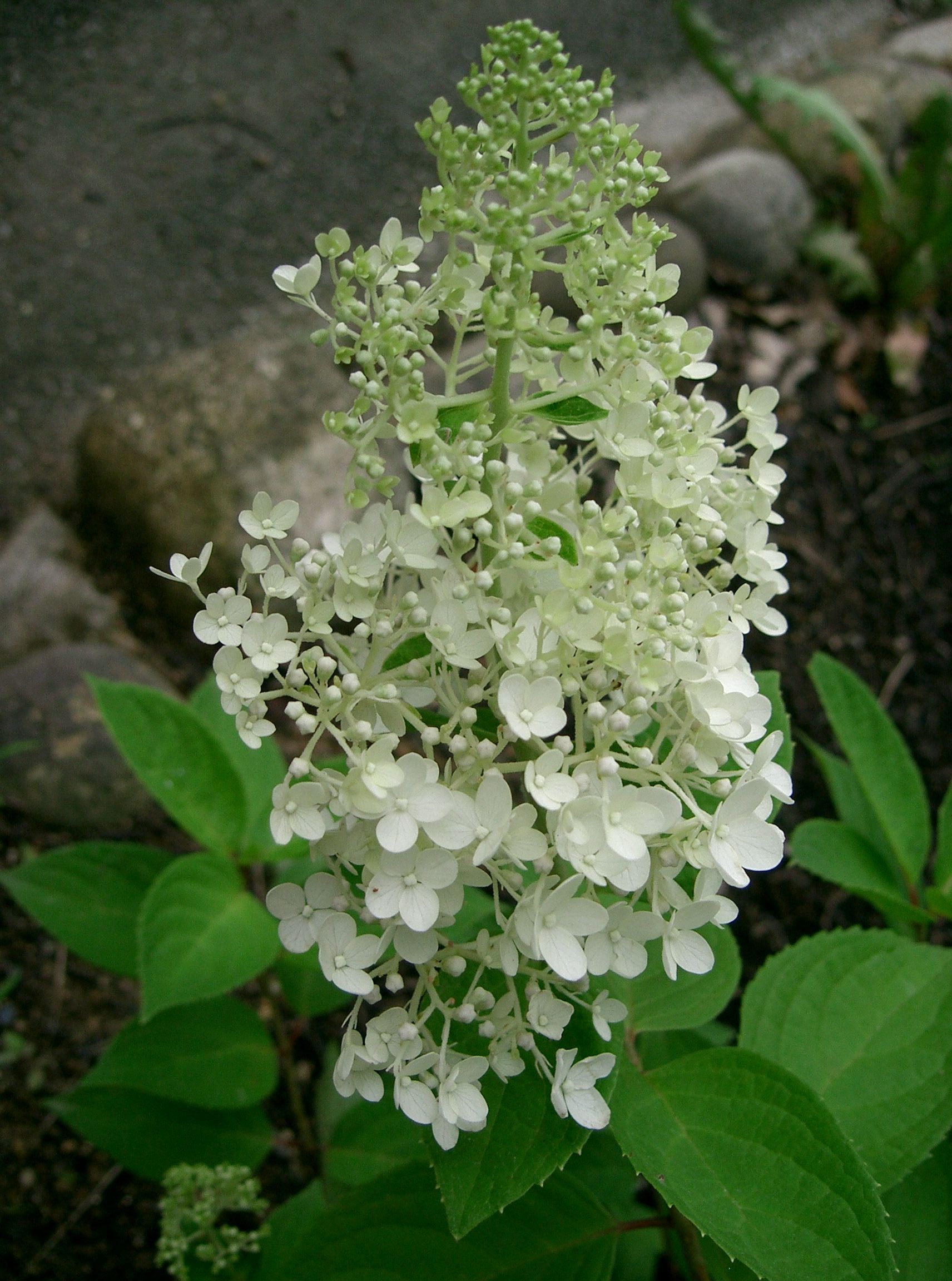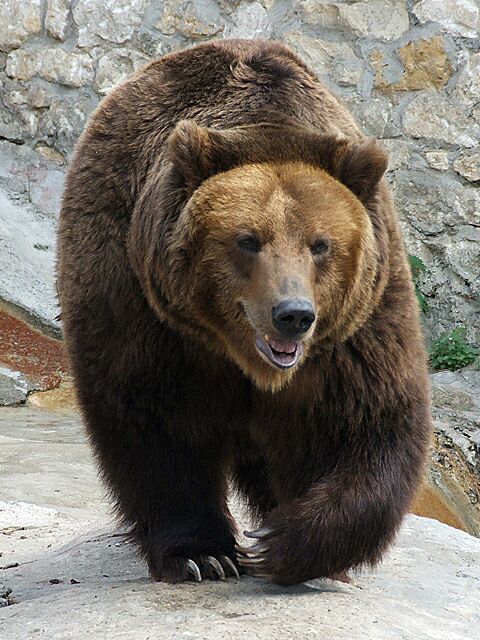|
Hydrangea Paniculata
''Hydrangea paniculata'', or panicled hydrangea, is a species of flowering plant in the family (biology), family Hydrangeaceae native plant, native to southern and eastern China, Korea, Japan and Russia (Sakhalin). It was first formally described by Philipp Franz von Siebold in 1829. Description It is a deciduous shrub or small tree, tall by broad, growing in sparse forests or thickets in valleys or on mountain slopes. The leaves are broadly oval, toothed and long. In late summer it bears large conical panicles of creamy white fertile flowers, together with pinkish-white sterile florets. Florets may open pale green, grading to white with age, thus creating a pleasing "two-tone" effect. Cultivation In cultivation it is pruned in spring to obtain larger flower heads. Numerous cultivars have been developed for ornamental use, of which the following have gained the Royal Horticultural Society's Award of Garden Merit: * 'Big Ben' * 'Limelight' (PBR) * 'Phantom' * = 'Interhydia ... [...More Info...] [...Related Items...] OR: [Wikipedia] [Google] [Baidu] |
Philipp Franz Von Siebold
Philipp Franz Balthasar von Siebold (17 February 1796 – 18 October 1866) was a German physician, botanist and traveller. He achieved prominence by his studies of Japanese flora (plants), flora and fauna (animals), fauna and the introduction of Western medicine in Japan. He was the father of the first female Japanese doctor educated in Western medicine, Kusumoto Ine. Career Early life Born into a family of doctors and professors of medicine in Würzburg (then in the Prince-Bishopric of Würzburg, later part of Bavaria), von Siebold initially studied medicine at the University of Würzburg from November 1815, where he became a member of the German Student Corps, Corps Moenania Würzburg. One of his professors was Franz Xaver Heller (1775–1840), author of the ' ("Flora of the Grand Duchy of Würzburg", 1810–1811). Ignaz Döllinger (1770–1841), his professor of anatomy and physiology, however, most influenced him. Döllinger was one of the first professors to under ... [...More Info...] [...Related Items...] OR: [Wikipedia] [Google] [Baidu] |
Award Of Garden Merit
The Award of Garden Merit (AGM) is a long-established award for plants by the British Royal Horticultural Society (RHS). It is based on assessment of the plants' performance under UK growing conditions. It includes the full range of cultivated plants, from annuals, biennials and perennials to shrubs and trees. It covers plants grown for specific purposes - such as vegetable crops, fruit, hedging, topiary, groundcover, summer bedding, houseplants, etc. It tests characteristics such as robustness, hardiness, longevity, flowering/fruiting abundance and quality, usefulness, and ease of cultivation. It pays particular attention to a plant's ability to survive and thrive in challenging conditions such as wind and frost. The AGM trophy symbol is widely used in gardening literature as a sign of exceptional quality, and is recognised as such by writers, horticulturalists, nurseries, and everybody in the UK who practises gardening. History The Award of Garden Merit is a mark of quality aw ... [...More Info...] [...Related Items...] OR: [Wikipedia] [Google] [Baidu] |
Hydrangea
''Hydrangea'' ( or ) is a genus of more than 70 species of Flowering plant, flowering plants native plant, native to Asia and the Americas. Hydrangea is also used as the common name for the genus; some (particularly ''Hydrangea macrophylla, H. macrophylla'') are also often called hortensia. The genus was first described from Virginia in North America, but by far the greatest species diversity is in eastern Asia, notably China, Korea, and Japan. Most are shrub, shrubs tall, but some are small trees, and others lianas reaching up to by climbing up trees. They can be either deciduous or evergreen, though the widely Horticulture, cultivated Temperate climate, temperate species are all deciduous. The flowers of many hydrangeas act as natural pH indicators, producing blue flowers when the soil is acidic and pink ones when the soil is alkaline. Etymology ''Hydrangea'' is derived from Ancient Greek language, Greek and means 'water vessel' (from ''húdōr'' "water" + ''ángos'' or ' ... [...More Info...] [...Related Items...] OR: [Wikipedia] [Google] [Baidu] |
Flora Of Russia
The wildlife of Russia inhabits terrain that extends across 12 time zones and from the tundra region in the far north to the Caucasus Mountains and prairies in the south, including temperate forests which cover 70% of the country. Russia's forests comprise 22% of the forest in the world as well as 33% of all temperate forest. According to the data furnished in the '' Red Data Book of the Russian Federation'', as of 1996, there were 266 mammal species and 780 bird species under protection. Some of the threatened plant species are the Siberian cedar pine, Korean cedar pine in the far eastern part of the country, wild chestnut in the Caucasus. In the Russian Far East, brown bears, Eurasian lynx, and red deer, Amur tigers, Amur leopards, and Asiatic black bears are reported. There are also about 350 bird species and 30 percent of Russia's endangered species are found. Carnivores under threat include the Siberian tiger, numbered at 400, and the Amur leopard of which only 30 remained ... [...More Info...] [...Related Items...] OR: [Wikipedia] [Google] [Baidu] |
Flora Of Korea
Flora (: floras or florae) is all the plant life present in a particular region or time, generally the naturally occurring ( indigenous) native plants. The corresponding term for animals is ''fauna'', and for fungi, it is '' funga''. Sometimes bacteria and fungi are also referred to as flora as in the terms ''gut flora'' or ''skin flora'' for purposes of specificity. Etymology The word "flora" comes from the Latin name of Flora, the goddess of plants, flowers, and fertility in Roman mythology. The technical term "flora" is then derived from a metonymy of this goddess at the end of the sixteenth century. It was first used in poetry to denote the natural vegetation of an area, but soon also assumed the meaning of a work cataloguing such vegetation. Moreover, "Flora" was used to refer to the flowers of an artificial garden in the seventeenth century. The distinction between vegetation (the general appearance of a community) and flora (the taxonomic composition of a community) wa ... [...More Info...] [...Related Items...] OR: [Wikipedia] [Google] [Baidu] |
Flora Of Japan
The flora of Japan comprises a large assemblage of plant species which can be found in Japan, such as sakura, katsura (tree), katsura, momiji and azalea. There are many species which are endemic to Japan. Diversity Japan has significant diversity in flora. Of approximately 5,600 total vascular plant species, almost 40% are endemic. This richness is due to the significant variation in latitude and altitude across the country, a diversity of climatic conditions due to monsoons, and multiple geohistorical incidences of connections with the mainland. Vegetation types Japan consists of roughly 4 vegetation classification, vegetation zones that are delineated by temperature and precipitation: the alpine region, subalpine region, summer-green broad-leaved forest region and Taiheiyo evergreen forests, evergreen broad-leaved forest region. Due to its substantial length of over 3,000 km from north to south and its mountain ranges that can exceed 3,000 meters, Japan's vegetation v ... [...More Info...] [...Related Items...] OR: [Wikipedia] [Google] [Baidu] |
Flora Of China
The flora of China consists of a diverse range of plant species including over 39,000 vascular plants, 27,000 species of fungi and 3000 species of bryophytes.Wu, Z. Y., P. H. Raven & D. Y. Hong, eds. 2006. Flora of China. Vol. 22 (Poaceae). Science Press, Beijing, and Missouri Botanical Garden Press, St. Louis - http://www.efloras.org/volume_page.aspx?volume_id=2022&flora_id=2 More than 30,000 plant species are native to China, representing nearly one-eighth of the world's total plant species, including thousands found nowhere else on Earth. China's land, extending over 9.6 million km, contains a variety of ecosystems and climates for plants to grow in. Some of the main climates include shores, tropical and subtropical forests, deserts, elevated plateaus and mountains. The events of the continental drift and early Paleozoic Caledonian movement also play a part in creating climatic and geographical diversity resulting in high levels of endemic vascular flora. These landscapes prov ... [...More Info...] [...Related Items...] OR: [Wikipedia] [Google] [Baidu] |
Greek Language
Greek (, ; , ) is an Indo-European languages, Indo-European language, constituting an independent Hellenic languages, Hellenic branch within the Indo-European language family. It is native to Greece, Cyprus, Italy (in Calabria and Salento), southern Albania, and other regions of the Balkans, Caucasus, the Black Sea coast, Asia Minor, and the Eastern Mediterranean. It has the list of languages by first written accounts, longest documented history of any Indo-European language, spanning at least 3,400 years of written records. Its writing system is the Greek alphabet, which has been used for approximately 2,800 years; previously, Greek was recorded in writing systems such as Linear B and the Cypriot syllabary. The Greek language holds a very important place in the history of the Western world. Beginning with the epics of Homer, ancient Greek literature includes many works of lasting importance in the European canon. Greek is also the language in which many of the foundational texts ... [...More Info...] [...Related Items...] OR: [Wikipedia] [Google] [Baidu] |
Cyanogenic Glycoside
In chemistry, a glycoside is a molecule in which a sugar is bound to another functional group via a glycosidic bond. Glycosides play numerous important roles in living organisms. Many plants store chemicals in the form of inactive glycosides. These can be activated by enzyme hydrolysis, which causes the sugar part to be broken off, making the chemical available for use. Many such plant glycosides are used as medications. Several species of ''Heliconius'' butterfly are capable of incorporating these plant compounds as a form of chemical defense against predators. In animals and humans, poisons are often bound to sugar molecules as part of their elimination from the body. In formal terms, a glycoside is any molecule in which a sugar group is bonded through its anomeric carbon to another group via a glycosidic bond. Glycosides can be linked by an O- (an ''O-glycoside''), N- (a ''glycosylamine''), S-(a ''thioglycoside''), or C- (a ''C-glycoside'') glycosidic bond. According to the ... [...More Info...] [...Related Items...] OR: [Wikipedia] [Google] [Baidu] |
Cyanide
In chemistry, cyanide () is an inorganic chemical compound that contains a functional group. This group, known as the cyano group, consists of a carbon atom triple-bonded to a nitrogen atom. Ionic cyanides contain the cyanide anion . This anion is extremely poisonous. Soluble cyanide salts such as sodium cyanide (NaCN), potassium cyanide (KCN) and tetraethylammonium cyanide () are highly toxic. Covalent cyanides contain the group, and are usually called nitriles if the group is linked by a single covalent bond to carbon atom. For example, in acetonitrile , the cyanide group is bonded to methyl . In tetracyanomethane , four cyano groups are bonded to carbon. Although nitriles generally do not release cyanide ions, the cyanohydrins do and are thus toxic. The cyano group may be covalently bonded to atoms different than carbon, e.g., in cyanogen azide , phosphorus tricyanide and trimethylsilyl cyanide . Hydrogen cyanide, or , is a highly volatile toxic liquid tha ... [...More Info...] [...Related Items...] OR: [Wikipedia] [Google] [Baidu] |
Plant Breeders' Rights
Plant breeders' rights (PBR), also known as plant variety rights (PVR), are rights granted in certain places to the breeder of a new variety of plant that give the breeder exclusive control over the propagating material (including seed, cuttings, divisions, tissue culture) and harvested material ( cut flowers, fruit, foliage) of a new variety for a number of years. The system of Plant breeders' rights is considered a sui generis form of intellectual property rights. With these rights, the breeder can choose to become the exclusive marketer of the variety, or to license the variety to others. In order to qualify for these exclusive rights, a variety must be new, distinct, uniform, and stable. A variety is: *''new'' if it has not been commercialized for more than one year in the country of protection; *''distinct'' if it differs from all other known varieties by one or more important botanical characteristics, such as height, maturity, color, etc.; *''uniform'' if the plant chara ... [...More Info...] [...Related Items...] OR: [Wikipedia] [Google] [Baidu] |
Royal Horticultural Society
The Royal Horticultural Society (RHS), founded in 1804 as the Horticultural Society of London, is the UK's leading gardening charity. The RHS promotes horticulture through its five gardens at Wisley (Surrey), Hyde Hall (Essex), Harlow Carr (North Yorkshire), Rosemoor (Devon) and Bridgewater (Greater Manchester); flower shows including the Chelsea Flower Show, Hampton Court Palace Flower Show, Tatton Park Flower Show and Cardiff Flower Show; community gardening schemes; Britain in Bloom and a vast educational programme. It also supports training for professional and amateur gardeners. the president was Keith Weed and the director general was Clare Matterson CBE. History Founders The creation of a British horticultural society was suggested by John Wedgwood (son of Josiah Wedgwood) in 1800. His aims were fairly modest: he wanted to hold regular meetings, allowing the society's members the opportunity to present papers on their horticultural activities and discov ... [...More Info...] [...Related Items...] OR: [Wikipedia] [Google] [Baidu] |









